- Learn About Early Detection Of Autism From Gary Goldstein, MD
- Thoughts On Autism From Gary Goldstein MD, CEO of the Kennedy Krieger Institute
- Learn About Effective Autism Early Interventions From The Kennedy Krieger Institute
Full Interview Audio
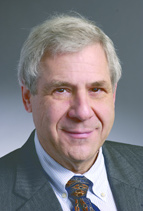
Personal Info
Sports Teams:Ravens, Wolverines
Most Influenced By:Guy Mckhann
Website: http://www.kennedykrieger.org
Interview Highlights
This is a condensed, lightly edited transcript of an audio interview. The full audio is available and highly recommended. The interviewee may post clarifications in the comments.
Adrian Bye: Today we’re here with Dr. Gary Goldstein, who runs the Kennedy Krieger Institute. Gary, can you tell us about yourself?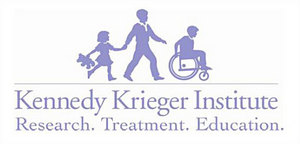
Gary Goldstein: From the career perspective, I’m a child neurologist. For the last 20 years, I’ve been the director of the Kennedy Krieger Institute, which is a full service training, care and educational program focused on individuals with developmental disabilities, their families and the community.
We have a biomedical approach and an educational approach. We do biomedical and other kinds of research, and we train physicians, psychologists, and therapists of many kinds in one of the major training programs in the country.
Adrian Bye: You are also involved with Autism Speaks?
Gary Goldstein: One of the disabilities I became interested in here is autism. My own investigations revealed that the amount of private support and philanthropy for autism at the time was smaller than for other significant pediatric disorders. I saw that the few foundations that were out there trying to get to the causes and the treatments of autism had resources that were much smaller than comparable organizations that were making more progress. I actually was involved in helping launch Autism Speaks.
Adrian Bye: It sounds like you wear some other hats as well? You’re a busy guy.
Gary Goldstein: Yes, the Institute and my own interests are broader than autism. Autism is sort of a latecomer for us. In the last 10 years we have really built up our autism program at the Institute. It’s about 20% of what we do now.
Adrian Bye: Tell us about what kind of autism work you do at the Institute.
Gary Goldstein: It’s broad. Rebecca Landa is the leader of our autism center. She’s well known for launching the concept of monitoring the newborn siblings of children born into a family where there is already a child with autism. The idea is, knowing that autism has a significant heritable component, these newborn children probably will be at higher risk than the general population. By watching them develop she could see the earliest signs of autism and then confirm later, as it evolves, if the child actually had autism.
A big emphasis here has been on early recognition, and then early and very early intervention. A lot of what she does centers on how early can you decide whether someone is at high risk for autism? What do you do about it? How do you alert pediatricians to the fact that this can be recognized in most cases by the age of two?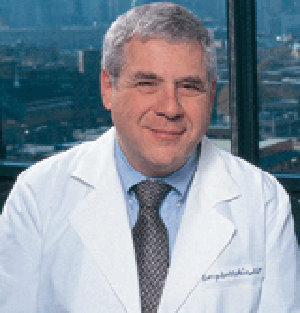
What is important about recognizing it early is there are behavioral interventions, now proven in controlled studies, that alter the severity and the presence of autism if you begin them in these early times.
Adrian Bye: If a baby was born that didn’t like being held very much, what kind of interventions would you do?
Gary Goldstein: When you engage a baby with a new object, the child who might have autism is equally interested in it as the other baby without autism, but what they don’t do is try to visually share the experience with their mother. You hand the baby something new or you put something in front of them that is interesting and they immediately see it, become interested, and then almost instantaneously look over at their mother as almost to say with their eyes, look at this, I’m excited, you’re excited, let’s do this as a team. Whereas a baby that is at risk gets engaged with the object and ignores that there are other people in the room. You can watch does this baby ever look over or how often does the baby look over to engage their mother in the game, in the toys. That’s just one example of shared attention.
I watched them do therapy in very small groups with toddlers. One of the games they play is there are four children sitting there and all of them have autism, all in their own world without being engaged with the therapist. You give them a picture of one of the other children sitting there next to them. When they look at that picture, and then they give it to the child whose picture it is, everyone gets excited. You keep doing this, every day. Keep doing this, and all of sudden you see these kids begin to engage as a group and begin to be more social.
It’s normal interactions but instead of just coming easily to these children, you have to really work at it, and you have to keep track of what you are trying to do. This is what early intervention is about.
Adrian Bye: It does sound like in some cases you’re fixing autism.
Gary Goldstein: Yes. Now there have actually been controlled studies and the outcomes are different for children who have the intense early intervention. The beauty of this is it’s not a drug that does this. We’re not putting these children on some psychiatric medication, and they get better. This is going on all over the country, it’s everywhere, and I think it’s going to make a big difference.
I think this is probably the most important advance that has happened because we don’t yet have a pharmacology for autism. There are psychiatric drugs that help with some of the psychiatric comorbidities that some people with autism have. But there aren’t medications that get to the core of autism, to the socialization issues, the secondary language issues and the repetitive behaviors of autism.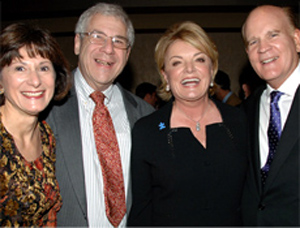
Adrian Bye: Would we want drugs to treat it?
Gary Goldstein: I don’t know that. I think that if it’s disabling. The traits of autism for some people are the source of their success. They are able to focus better than other people. They won’t get off the track, they believe something or they want to accomplish something, and they just won’t stop. That makes them successful.
If the track they are on is looking at a piece of string all day long, and they don’t want to get off that track, that’s a bad track to be on. If you are so focused that you can see patterns in stock prices and become a multi-billionaire because you’re a stock trader, I don’t know, is that good or bad? I think there are traits that give you some really unusual abilities, but to the extreme, it can be a disability. That is my own personal view of this. When we keep expanding the diagnosis, then you begin to see people, if they have these traits, that they actually use them to their success.
It’s very hard for people with autism to be successful in public relations and sales, but they can be very successful in the back room making things work. I don’t think those people have a disease. These are the traits that are part of what we call autism. I don’t think it’s a disability until you are not able to take care of yourself. We have children who are in our self-injury treatment program, who have autism, who are non-verbal, who are 10 years old, and the way they communicate is by banging their head on the wall. That’s not very good, and that’s very different than those who are hedge fund people.
Adrian Bye: Autism obviously comes with issues, but it does come with some benefits. Now the benefits come from things like intense focus at work and things like that?
Gary Goldstein: It’s kind of like a puzzle. If you give a 1000 piece puzzle to a four year old, what are they going to do with it? But what about a child that can actually see the patterns and puts this thing together? That isn’t just focus. The brain is wired differently. And it can be to an advantage, or it can be to a disadvantage.
One of the serious problems is the effect on social interaction. Some people thought maybe these people are introverted and happy this way, but what we are finding is that they are not happy, and there is social anxiety and a desire to be interactive with family and have friends. It depends how extreme that is, and if it gets to a point where you can’t participate in society, that’s incredibly disabling.
Adrian Bye: Tell us more about other aspects of the Institute.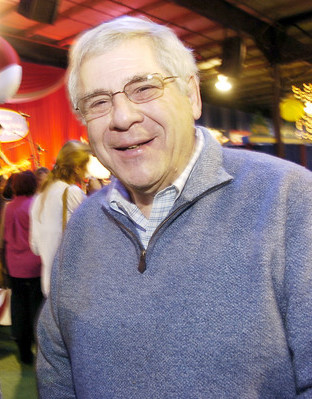
Gary Goldstein: I have the broader view that, for this institute to contribute, we look at the child’s brain and at the developing brain of development. Maybe in some genetic or environmental way these vulnerabilities and exposures might be autism, but they might end up being attention deficit or they might end up being a learning disability. Some of those children have autism with those other problems and some don’t. We certainly understand differences in needs of the different populations, but we’re looking at the disorders of the developing brain as they get expressed. The same lesion in the motor system may lead you to paralysis, and if it’s more in the temporal lobe or further frontal lobe, it’s going to be socialization issues.
A lot of our work has to do with this whole concept of plasticity, the idea that neurons can make new connections continuously through life. The insights we get from children, who are paralyzed in the brain, from children who have autism, those are overlapping contributions. So, we’re not mixing everybody together, but we sort of see the challenge, the same gene. You look at these genes that are being identified as having some risk for autism, most of them don’t cause it, but you see them having a risk for other conditions that we see.
We get the broader view, because we’re not an autism center, we’re a developmental disability center. All comers. We’re very interested in the tools of modern imaging. We have an incredible research imaging center using MRIs to see not only how the brain looks but how it works. We have a genomic center, and we’re just beginning to have these tools to look at someone’s entire genome. We’re beginning to look at conditions, not necessarily autism to start with, but other disorders that are much easier to make the clinical diagnosis. That helps us look at all the children, including the ones with autism.
Adrian Bye: For those interested in funding research, I’ve looked at a lot of autism research and where I see it, the behavioral stuff is being underfunded, and that’s where the research should be going. I’m curious as to your thoughts on that?
Gary Goldstein: The challenge right now with the behavioral studies is dissemination. If you come to Kennedy Krieger or go to 50 other places in this country, there is some good behavioral intervention available. But when you add it all up, how many children can all of these 50 centers serve? If you look at the fact that it is 1% of all children, and there are 40,000 children every year being added to this collection. There are not 40,000 slots up there, there is at most 10%. So, how do we get from being able to serve 10% to 100%? How do we disseminate it, how do we make it more cost effective? We actually have something we can help with, but we are not applying it to as many children as needed.
Now, one approach has been, and this has been an Autism Speaks agenda, to get states to pass laws to pay for this stuff, and they’ve been marching about the country, getting laws changed. But the law itself doesn’t always translate into funding. We’re at that point. We have something to disseminate. I don’t know that it’s research money, but it’s dissemination money. Or maybe it’s too expensive what we are doing? Just because what we do works to the degree it does doesn’t mean it couldn’t be done more cost effectively.
Adrian Bye: You could make a whole series of training videos, and just put it on the web.
Gary Goldstein: How do you get that to the child? At scale? You can demonstrate these things, but every year there are 40,000 more. That’s a challenge and we’re thinking about how to do that.
The bigger challenge is whatever tools we have in genetics are being applied to this population.
Adrian Bye: Why do we need to understand the genetics of it?
Gary Goldstein: For diagnosis. If you might have diabetes, you get a blood test and it takes 5 minutes and $100. We’ve got a much more complicated way to make a diagnosis now, but even that would make a difference. If you knew which children were at high risk, you could begin these early interventions. We know that siblings are at high risk, but what about the other children? We think that if you could start at 6 months, it might be more cost effective to do that, but who would you do it to?
It would also help you hone in on the environmental triggers that may be more important than the genetics, but that link up together with the genetics. You could make better sense of the data, in the exploring and searching for environmental triggers.
Adrian Bye: We’re going to have to wrap up. Is there anything else you want to mention?
Gary Goldstein: The fact that autism merges with very high functioning, very productive and important people to society makes this particularly challenging. If it was limited to those that were non-verbal and were dependant, it would make it easier to get to the essence of it. But that isn’t the case. That is what makes this really challenging. We spend a lot of time here thinking about how to focus our energies and how to use the tools that we have available to us, and all the patients.









